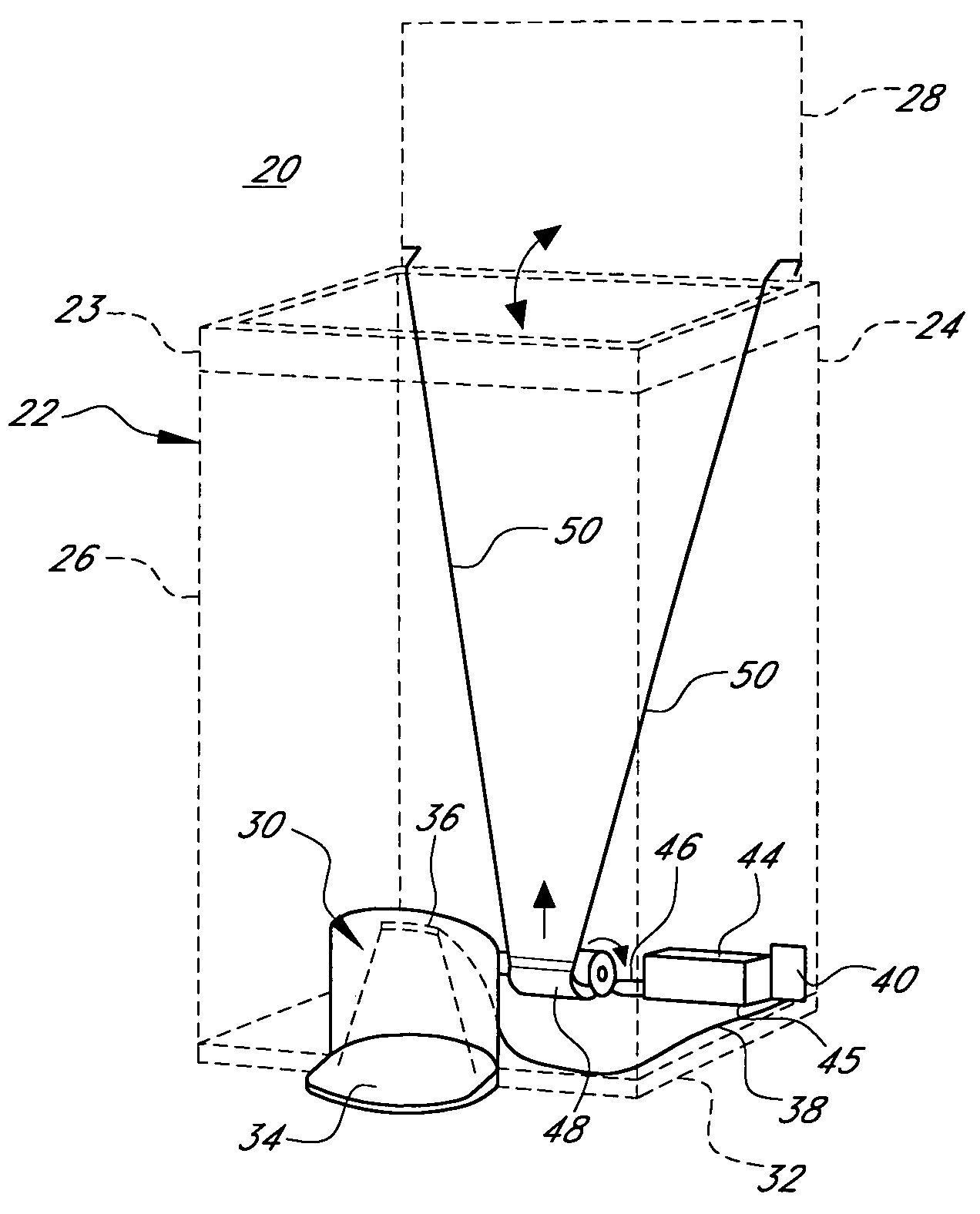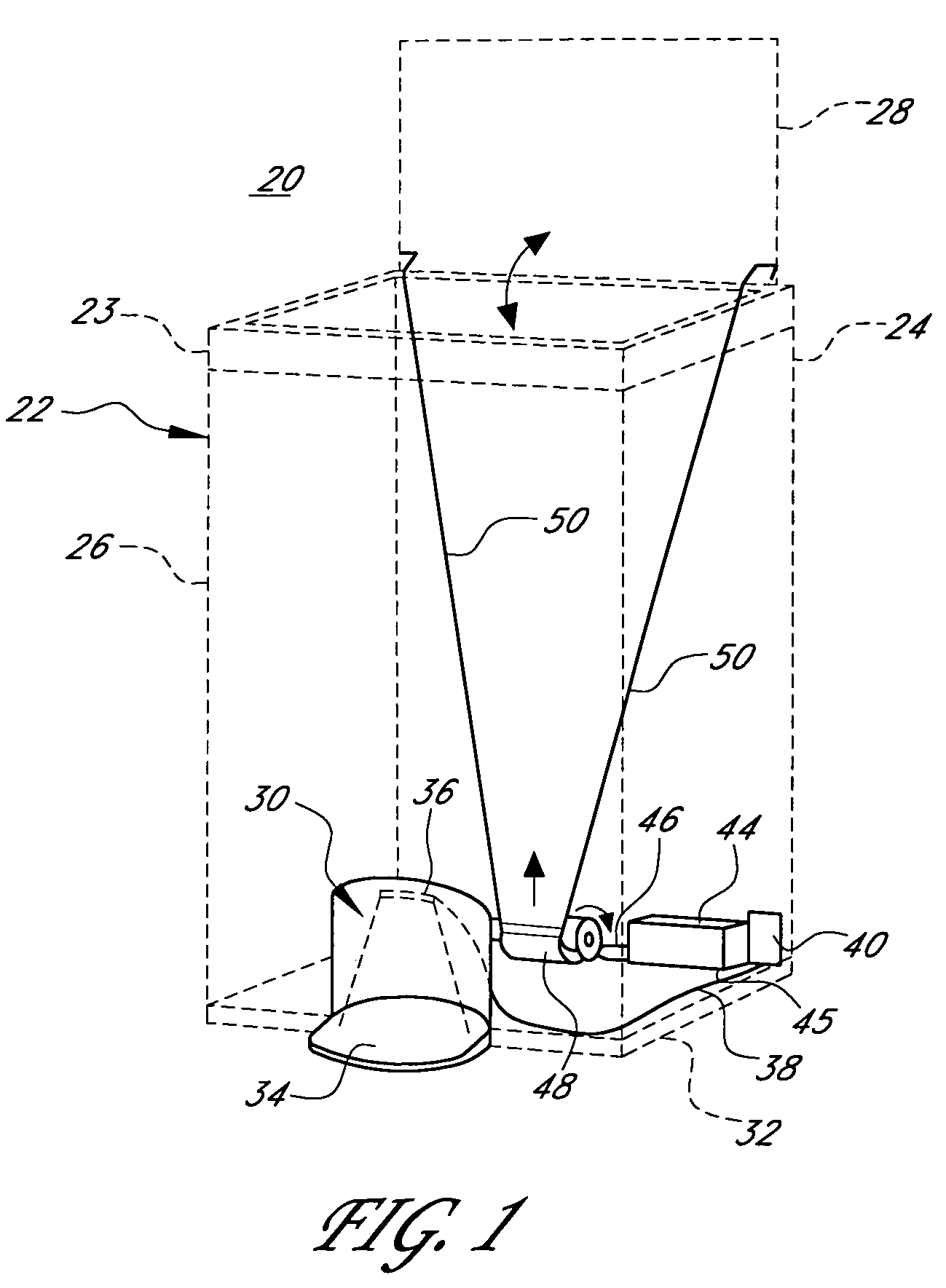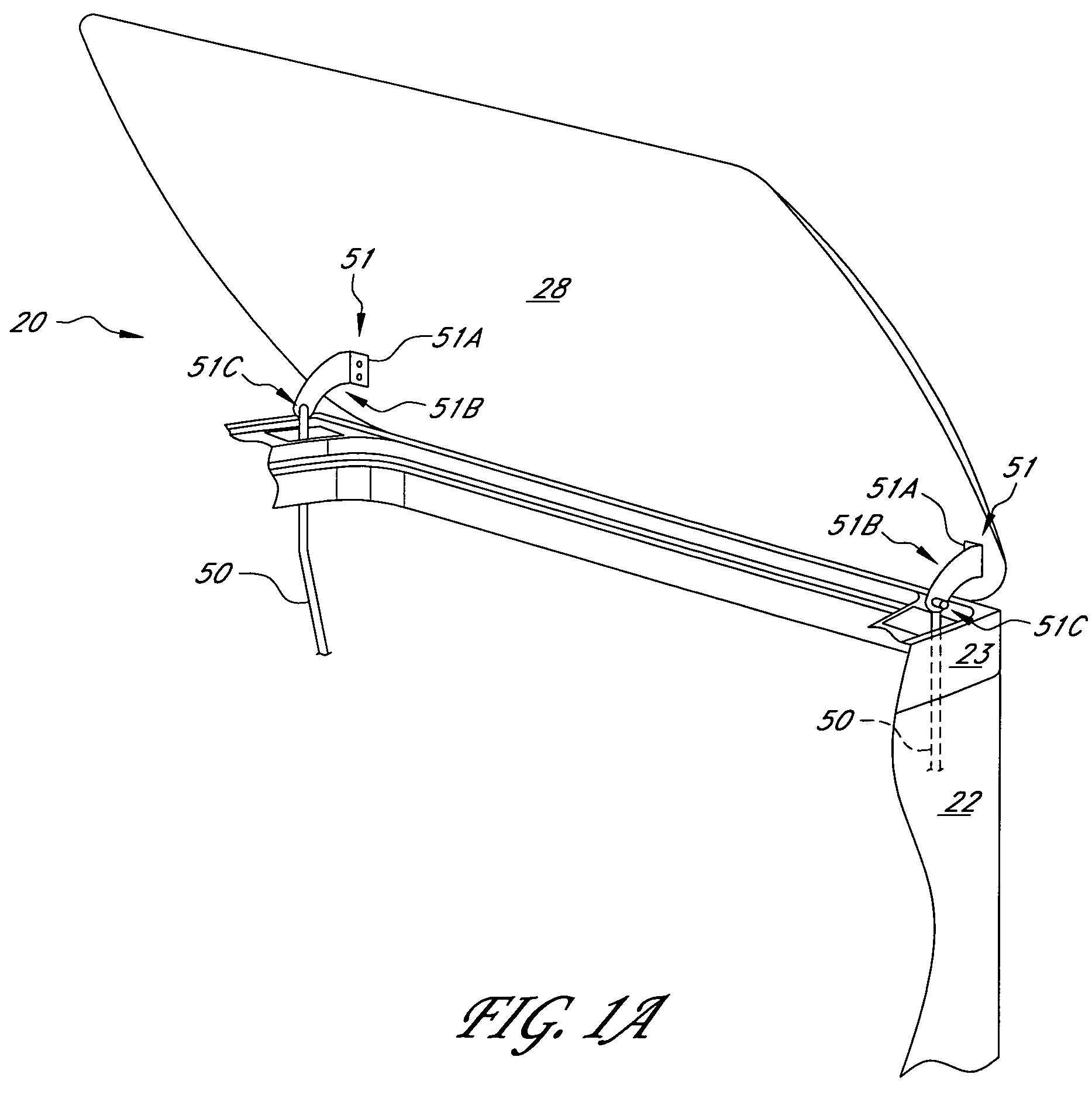Trash can with power operated lid
a technology of power operated devices and trash cans, which is applied in the direction of caps, motor/generator/converter stoppers, dynamo-electric converter control, etc., can solve the problems of affecting the operation of the device, the battery power of the device can be worn out too quickly, and the motion sensor may present difficulties, etc., to achieve the effect of less susceptible to false detection
- Summary
- Abstract
- Description
- Claims
- Application Information
AI Technical Summary
Benefits of technology
Problems solved by technology
Method used
Image
Examples
Embodiment Construction
[0032]The embodiments of a powered system for opening and closing a lid or door of a receptacle or other device is disclosed in the context of a trash can. The inventions disclosed herein are described in the context of a trash can because they have particular utility in this context. However, the inventions disclosed herein can be used in other contexts as well, including, for example, but without limitation, large commercial trash cans, doors, windows, security gates, and other larger doors or lids, as well as doors or lids for smaller devices such as high precision scales, computer drives, etc.
[0033]With reference to FIG. 1, a trash can assembly 20 can include an outer shell 22 and an inner liner (not shown) configured to be retained within the outer shell. For example, an upper peripheral edge of the outer shell 22 can be configured to support an upper peripheral edge of a liner, such that the liner is suspended by its upper peripheral edge within the shell 22. However, other de...
PUM
 Login to View More
Login to View More Abstract
Description
Claims
Application Information
 Login to View More
Login to View More - R&D
- Intellectual Property
- Life Sciences
- Materials
- Tech Scout
- Unparalleled Data Quality
- Higher Quality Content
- 60% Fewer Hallucinations
Browse by: Latest US Patents, China's latest patents, Technical Efficacy Thesaurus, Application Domain, Technology Topic, Popular Technical Reports.
© 2025 PatSnap. All rights reserved.Legal|Privacy policy|Modern Slavery Act Transparency Statement|Sitemap|About US| Contact US: help@patsnap.com



